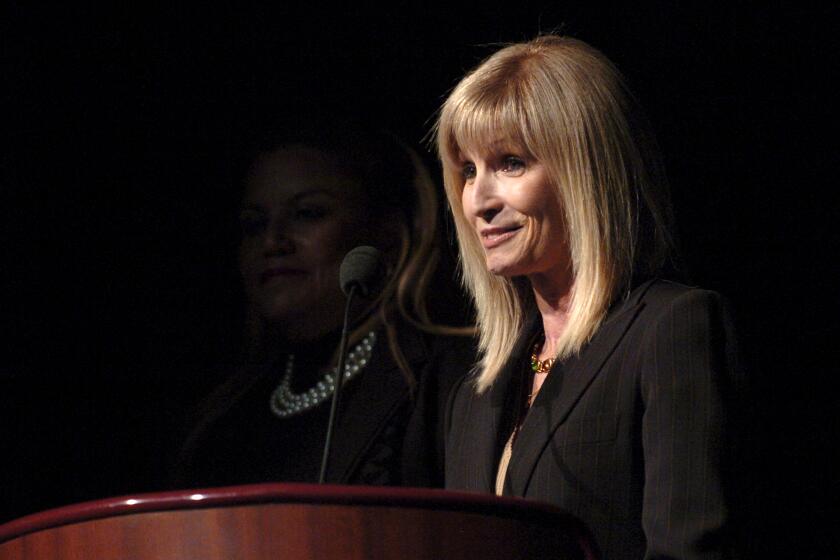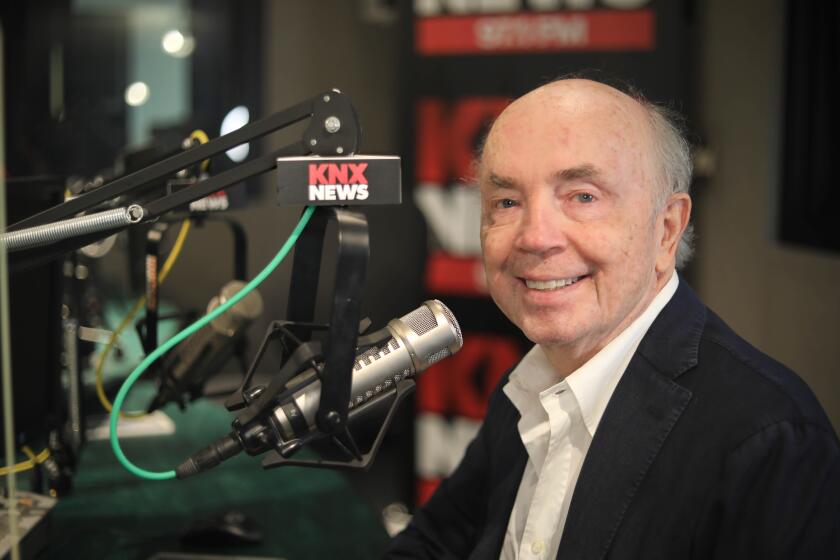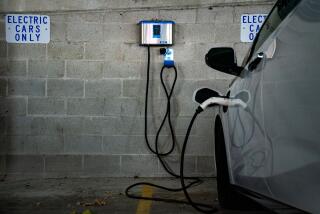
- Share via
Sean Hannity is rarely on the same frequency as liberal Democratic lawmakers. Nor does he usually support legislation that makes demands on the private sector.
But the conservative Fox News star and radio host is cheering on the efforts of Sen. Edward Markey (D-Mass.) to require car manufacturers to keep the AM dial in their vehicles.
Hannity’s daily program reaches more than 13 million terrestrial radio listeners a week, mostly on AM stations, which face obsolescence as major car manufacturers such as Volkswagen, Volvo and Tesla remove the band from their electric vehicles.
“What they’re trying to do would impact political opinion to a very big extent,” Hannity said in a recent phone interview. “Thankfully, there are even Democrats who see the importance of this.”
It’s not just conservative hosts who would feel the sting of losing AM, a communications source for more than 100 years. While AM stations have seen their audience migrate to podcasts, satellite radio and streaming, they still provide a free-to-listen voice for underrepresented communities and remain a reliable source of public safety information in emergencies.
Markey has responded to the threat with the AM Radio for Every Vehicle Act, which would require all cars sold in the U.S. to provide the band in their dashboards. The bill — co-sponsored by Sen. Ted Cruz (R-Texas) and supported by lawmakers on both sides of the aisle — will go to the Senate floor in some form for a full vote later this year. The bill last week passed the Senate Commerce Committee.
The legislation would place a burden on automakers. Car manufacturers say motors in electric vehicles generate electromagnetic interference that causes static in AM station signals. Instead of investing in workarounds that would solve the interference problem, they have chosen to eliminate the band, noting the other audio options that are available to consumers.
Scott A. Schmidt, vice president of the Alliance for Automotive Innovation, a lobbying group for the auto industry, told Washington legislators at a June hearing that there are safety alert systems included in digital audio services that can serve drivers who don’t have AM radio.
As for the proposed requirement to keep AM in cars, Schmidt said “mandates are a blunt instrument” especially for a technology that “has declining listenership.”
Markey supports the move to electric vehicles as a way to address the climate crisis and reduce greenhouse gas emissions, but doesn’t believe AM should be sacrificed as a result. The National Assn. of Broadcasters, the lobbying group that represents TV and radio station owners, threw its support behind the bill.
Turner, known as “The Burner,” was one of the most listened-to DJs in the country in the ‘70s and ‘80s, through L.A.’s KMET-FM and syndicated programming.
Michael Harrison, a consultant and editor of the radio industry journal Talkers, said technological obsolescence is a fact of life in media. But he believes it’s a miscalculation to give up on AM radio in cars when one in three Americans tune in to the band every month, according to Nielsen data. Plus, it still functions as a platform for free speech and information vital to the public.
Three-quarters of AM listening occurs in cars, so losing its place on the dashboard would ultimately chip away at the available audience and disrupt listener habits. Losing more audience would intensify the financial pressure on AM station owners, some of whom have shut their outlets down in recent years.
“The car makers got rid of 8-track tape players, they got rid of cassette players, they got rid of CD players and rightfully so,” Harrison said. “They didn’t realize that the AM radio has far more cultural roots and underpinnings and far more meaning and applicability than those other dashboard devices.”
AM stands for amplitude modulation, used to transmit information in a radio wave. The very first commercial radio broadcast — a report on the results of the 1920 presidential election won by Warren Harding — was transmitted over Pittsburgh’s AM station KDKA.
The most powerful AM signals can be heard over several states. They dominated broadcasting for more than 50 years, bringing listeners Bing Crosby’s crooning, Bob Hope’s comedy routines and Franklin Delano Roosevelt’s fireside chats in the 1930s and ‘40s.
During the Cold War era of the 1950s, AM frequencies were designated to provide civil defense information in the event of a nuclear attack. In the 1960s, top 40 stations such as KHJ-AM (930) — “Boss Radio” in Los Angeles — gave baby boomers the sound of the Beatles and Motown.
The FCC passed a rule in 1965 that limited how much AM programming could be duplicated on jointly owned FM stations, which provided better sound fidelity but not the same geographical reach. The rule opened up a proliferation of new music formats on the FM dial and by the 1980s, the band had more listeners than AM outlets.
As FM grew in popularity, AM stations continued to provide news and sports programming, but even those formats have shifted to FM in recent years. KNX, the longtime all-news radio station serving Southern California, now airs on FM and calls itself KNX News 97.1, even though it’s still heard on its old AM frequency of 1070 as well.
The AM band’s association with political talk radio is in large part due to the success of Rush Limbaugh, the bombastic commentator who became a phenomenon in the 1990s and set a template for many hosts who followed.
‘L.A.’s Morning News’ with Mike Simpson, Vicky Moore and Jennifer York starts Monday on Audacy’s all-news radio station.
While conservative talk radio is what gets attention on AM, other constituencies would also be disenfranchised if the band goes away. Markey noted last week that many AM stations have Latino and Black ownership — such as KBLA-AM (1580) in Los Angeles — providing programming their communities can access for free.
“They shouldn’t just disappear during the electric vehicle revolution just because some companies say they can’t figure out how to do this,” Markey said at a Senate committee hearing last week. “Some companies say we know how to have a space rocket and go to the moon and we know how to invent electric vehicles, but we can’t figure out how to keep AM radios and those new cars. Come on.”
Amador Bustos is a Portland, Ore.-based station owner whose main business is Spanish-language FM outlets. Along the way he acquired AM stations that serve ethnic communities, including KZSJ-AM (1120) in San Jose, which has one of the country’s largest concentration of Vietnamese immigrants, many of whom came to the U.S. as refugees.
“They are getting news and information in their language,” Bustos said.
Bustos also owns AM stations that offer Russian-language religious programming aimed at Christians who have left Russia because of persecution.
AM stations remain a vital part of the Emergency Alert System, which the federal government uses to provide information during a crisis or disaster.
Seventy-seven stations in the system, most of which are AM and cover 90% of the country, are equipped with backup communications equipment and generators that allow them to continue broadcasting during and after an emergency.
Federal agencies have praised the reliability of AM, which is able to reach rural areas where broadband internet service can be spotty or nonexistent.
Ford Motor Co. was among the automakers that planned to drop AM, not only in electric vehicles but in internal combustion engine models as well. But the maker of the bestselling truck in the U.S. reversed its decision after public safety officials raised concerns.
If the auto companies don’t fall in line, Hannity said he is ready to alert his audience.
“If they’re being obstinate about this, I’m just gonna name the names and let people know that they’re silencing conservative voices here,” Hannity said. “I don’t think they’ve put a lot of thought into it.”
More to Read
Inside the business of entertainment
The Wide Shot brings you news, analysis and insights on everything from streaming wars to production — and what it all means for the future.
You may occasionally receive promotional content from the Los Angeles Times.













